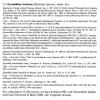
08-12-2025 21:04
Mark Stevens"Hello everyone,I'm relatively new to microscopy (

08-12-2025 18:59
 Lothar Krieglsteiner
Lothar Krieglsteiner
.. found by a seminar-participant, I do not know t

08-12-2025 17:37
 Lothar Krieglsteiner
Lothar Krieglsteiner
20.6.25, on branch of Abies infected and thickened

07-12-2025 16:07
Arnold BüschlenHallo, ich habe in einer Moos-Aufsammlung (epiphy

16-03-2014 22:00
Hello,I found this species a few months ago but ha

08-12-2025 13:39
Thomas Læssøehttps://svampe.databasen.org/observations/10572899

05-12-2025 17:33
 Bruno Coué
Bruno Coué
Bonjour, je serais heureux de recueillir votre avi
ascomycete on thin Picea twig from Norway
Lothar Krieglsteiner,
01-12-2022 12:46
 found on 8.7.2022, on the margin of National Park of Bjafjella, on a thin twig of Picea about 1,5 m high above the ground on a still attached twig. The asomata were astonishingly soft and easy to squash - as I was first thinking of collecting a pyrenomycete. The ascomata do not look like apothecia to me (?). The spores I measured about 15-18/7-8 µm.
found on 8.7.2022, on the margin of National Park of Bjafjella, on a thin twig of Picea about 1,5 m high above the ground on a still attached twig. The asomata were astonishingly soft and easy to squash - as I was first thinking of collecting a pyrenomycete. The ascomata do not look like apothecia to me (?). The spores I measured about 15-18/7-8 µm. Can somebody provide me with a hint?
Yours, Lothar
Zdenek Palice,
01-12-2022 21:52
Re : ascomycete on thin Picea twig from Norway
Hallo.
Could this perhaps be something around Mycowinteria (Protothelenella) anodonta? I do not know this species but found this "semilichen" in literature as an adept in the following paper: Sherwood-Pike M. & Boise J. (1986): Studies in lignicolous ascomycetes: Xylopezia and Mycowinteria. - Brittonia, 38(1): 35-44.
Allegedly it produces occassional longitudinal septa at ascospores that should be 3-5septate. The size fits. Slightly amyloid hymenium and broad amyloid tube in ascus apex are other features according to the authors.
Otherwise it reminds me Exarmidium that you surely know much better than me
(called as Xylopezia by the authors mentioned above)
Best wishes
Zdenek
Could this perhaps be something around Mycowinteria (Protothelenella) anodonta? I do not know this species but found this "semilichen" in literature as an adept in the following paper: Sherwood-Pike M. & Boise J. (1986): Studies in lignicolous ascomycetes: Xylopezia and Mycowinteria. - Brittonia, 38(1): 35-44.
Allegedly it produces occassional longitudinal septa at ascospores that should be 3-5septate. The size fits. Slightly amyloid hymenium and broad amyloid tube in ascus apex are other features according to the authors.
Otherwise it reminds me Exarmidium that you surely know much better than me
(called as Xylopezia by the authors mentioned above)
Best wishes
Zdenek
Lothar Krieglsteiner,
01-12-2022 22:55

Re : ascomycete on thin Picea twig from Norway
Hello Zdenek,
thank you very much for your proposal and for the file. It is a good trap and I will see if I can follow it successfullly.
Best regards, Lothar
P.S. Exarmidium looks different in my opinion, but is similar in some respects, surely.
thank you very much for your proposal and for the file. It is a good trap and I will see if I can follow it successfullly.
Best regards, Lothar
P.S. Exarmidium looks different in my opinion, but is similar in some respects, surely.
Lothar Krieglsteiner,
14-01-2023 17:54

Re : ascomycete on thin Picea twig from Norway
Hello Zdenek,
I think you had a false opinion of me: "that you surely know much better than me" (Exarmidium). I now think that I found E. inclusum (Xylopezia inclusa).
Because:
1. There is not a trace of an amyloid reaction in the asci (and not in the hymenium) - with Melzer and Baral, no difference.
2. I do not find a longitudinal septum, none.
3. The spores are not so much pointed but more rounded, as I already showed before.
So - I think Exarmidium inclusum is a good hint. I found it repeatedly in the Bavarian forest, but after the first few examinations it was only determined macroscopically from then on.
And - it was found in fresh state, more reddish brown.
The one from Norway is black, but fully dried out, and maybe more ripe.
So I learned something again ...
Thanks again for your help!
Yours, Lothar
I think you had a false opinion of me: "that you surely know much better than me" (Exarmidium). I now think that I found E. inclusum (Xylopezia inclusa).
Because:
1. There is not a trace of an amyloid reaction in the asci (and not in the hymenium) - with Melzer and Baral, no difference.
2. I do not find a longitudinal septum, none.
3. The spores are not so much pointed but more rounded, as I already showed before.
So - I think Exarmidium inclusum is a good hint. I found it repeatedly in the Bavarian forest, but after the first few examinations it was only determined macroscopically from then on.
And - it was found in fresh state, more reddish brown.
The one from Norway is black, but fully dried out, and maybe more ripe.
So I learned something again ...
Thanks again for your help!
Yours, Lothar
Zdenek Palice,
15-01-2023 15:54
Re : ascomycete on thin Picea twig from Norway
Hallo Lothar,
good to know that your specimen is Exarmidium in the end. I was not sure any way. E. inclusum seems to be a plurivorous species. Last year I saw it also on dried stems of the fern (Athyrium) in a herbarium specimen from Sweden.
all the best.
Zdenek
good to know that your specimen is Exarmidium in the end. I was not sure any way. E. inclusum seems to be a plurivorous species. Last year I saw it also on dried stems of the fern (Athyrium) in a herbarium specimen from Sweden.
all the best.
Zdenek
Martin Bemmann,
15-01-2023 17:50

Re : ascomycete on thin Picea twig from Norway
Many years ago I made a collection that was identified by Zotto as an Exarmidium (documentation attached), then called E. cf. diaphanum. E. diaphanum is for Aptroot 1998 (Massarina): 140 a synonym for E. inclusum (attached as well).
The ascocarps of my collection were way more light brownish, not black. But this can be due to a more mature and dry state of Lothar's collection.
Regards
Martin

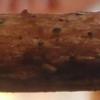
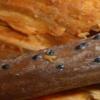
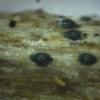
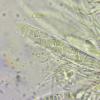
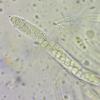
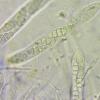
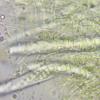
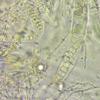
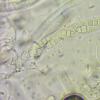
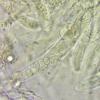

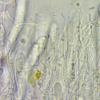
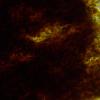
 sherwood-amp-boise86xylopezia-mycowinteria-0001.pdf
sherwood-amp-boise86xylopezia-mycowinteria-0001.pdf